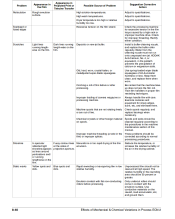noahsmith
Member
Hi Everyone,
I recently had an issue after developing my Kodak Pro 100 35mm negatives.
In the photos below, you'll see white spots which are actually all over my negatives. It's embedded into the negative itself, I already tried to see if I could clean it off so that rules out dust being the issue.
I developed these myself using a Unicolor kit. This was the 7th roll I've developed with these chemicals so if my calculations are correct, the developing time would be about 4:20 for normal processing.
I've been developing color film for a long time and have never seen this. The only thing I do after I pull the negatives out of the tank is run a Kimtech wipe down the non elmusion side of the negative to avoid water stains. All of my chemicals were originally mixed with distilled water. During the washing step, I just use my sink water and have never really had an issue with that.
Any thoughts on what this could be? I have a theory that it could be the Kimtech wipe although I don't normally have an issue with that either and if I don't use it, many times I get water stains.
Appreciate any help, thanks!


I recently had an issue after developing my Kodak Pro 100 35mm negatives.
In the photos below, you'll see white spots which are actually all over my negatives. It's embedded into the negative itself, I already tried to see if I could clean it off so that rules out dust being the issue.
I developed these myself using a Unicolor kit. This was the 7th roll I've developed with these chemicals so if my calculations are correct, the developing time would be about 4:20 for normal processing.
I've been developing color film for a long time and have never seen this. The only thing I do after I pull the negatives out of the tank is run a Kimtech wipe down the non elmusion side of the negative to avoid water stains. All of my chemicals were originally mixed with distilled water. During the washing step, I just use my sink water and have never really had an issue with that.
Any thoughts on what this could be? I have a theory that it could be the Kimtech wipe although I don't normally have an issue with that either and if I don't use it, many times I get water stains.
Appreciate any help, thanks!
Last edited:














